
China's Desert Transformation: The Great Green Wall and Beyond
A Vision Emerges
In the desolate expanse of the Gobi Desert, a bold vision took root—transforming barren landscapes into lush greenery. Launched in 1978, the Great Green Wall aimed to combat the relentless encroachment of desert sands threatening communities and ecosystems alike. The journey promised challenges, yet also hope. Families, previously resigned to the idea of a harsh and unchangeable environment, began to dream again. Schools taught children about the importance of trees, sparking a wave of enthusiasm.
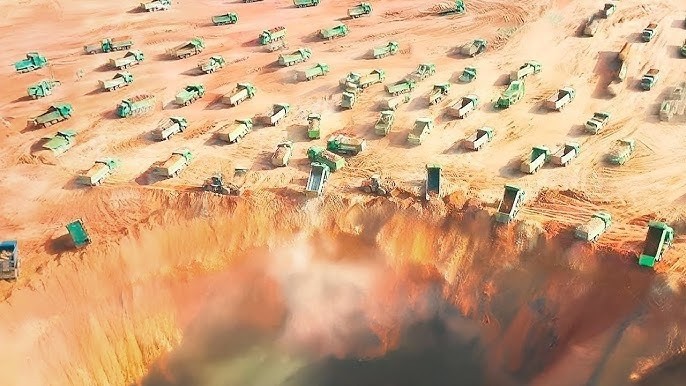
The premise was simple: plant trees, reclaim the land, and secure a future. Community gatherings flourished, and locals engaged in discussions about sustainable practices. Each tree planted by hand not only held the promise of a green tomorrow but also became a symbol of shared responsibility—a collective effort that united neighbors in ways that had not been seen before. Curious eyes watched the unfolding transformation with anticipation. Could a barren desert really sprout life anew?
Hands in the Soil
Among the many dedicated souls contributing to this monumental effort, Yin Yusen emerged as an inspiring figure. For over forty years, she and her husband dedicated their lives to turning the Gobi green. Every morning, they rose with the sun, their hands deep in the soil, planting saplings with love and care. Yin often recalled her childhood, weaving through forests with vibrant colors, a stark contrast to the lifeless dunes surrounding her. With each tree they planted on parched ground, a sense of hope blossomed.
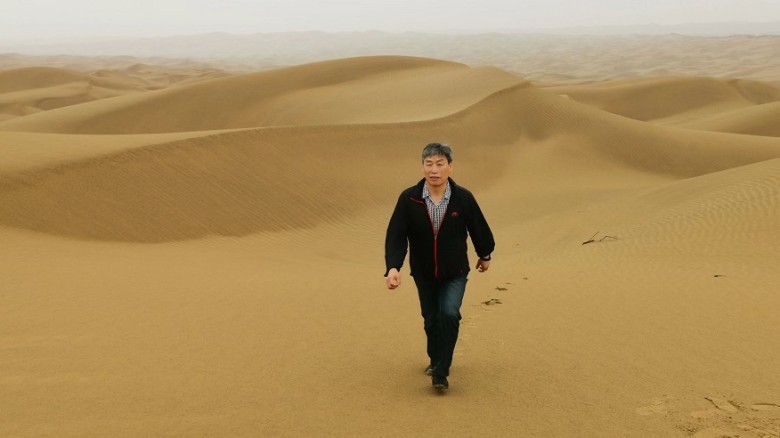
Communities rallied behind them, joining hands and hearts, transforming labor into a shared joy. The children giggled as they helped bury fragile saplings, marking every seedling with painted rocks. Intensifying storms and shifting sands posed challenges, yet with determination, hopes sprouted. "If we can grow even one tree," she thought, "we can grow a forest." This bond with the earth became a lifeline for many, intertwining their lives with nature.
The Numbers Game
Remarkably, by 2009, reports indicated that China's Great Green Wall covered over 193,000 square miles, a stunning achievement that ignited both pride and skepticism. Interest surged worldwide as experts gauged results against traditional notions of reforestation. Community members rejoiced, their voices echoing stories of thriving trees and revitalized landscapes. Families even celebrated tree-planting festivals, where laughter filled the air alongside the scent of freshly turned earth.
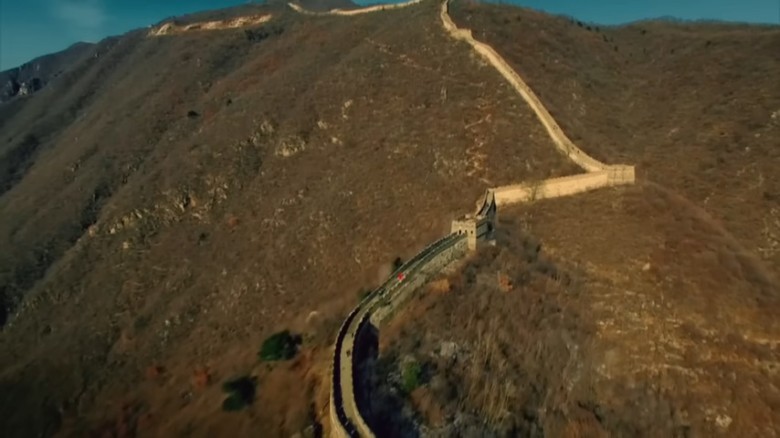
However, questions arose: Was such rapid growth sustainable? Could the land truly hold the weight of millions of trees? Analysts conducted studies, revealing mixed data that showcased both successes and untapped challenges. The balance between ambition and actuality pushed residents to engage in earnest dialogue. This project had become a living documentary, absorbing lessons from both success and failure. Each tree symbolized a struggling ecosystem—a reminder of what was possible. Would they learn to nurture a fragile alliance between humanity and nature?
Climate Change Tactics
A pivotal moment emerged in 2020 when a report illuminated the success of the tree-planting initiatives in combating climate change. The Gobi Desert, once expanding each year, started to contract, shrinking at a rate of over 770 square miles annually. This unexpected shift stirred excitement and pride among locals, who began to feel a renewed connection with their land. Sands that previously choked their homes now pulled back, revealing glimpses of the landscape’s dormant potential.
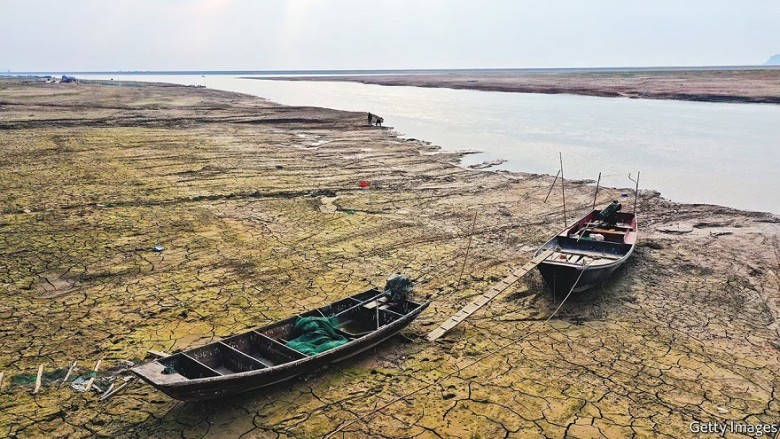
Planting trees not only earned their economic recovery; it allowed them to reclaim their heritage. School children learned about carbon absorption, igniting a wave of environmental advocacy. The community blossomed into eco-guardians, passionately educating neighbors on sustainable practices. Families revisited the idea of ancestral land, nurturing it into a green legacy. Each report of improvement fueled a collective determination: they were not merely planting trees but crafting a sustainable future. An ecosystem rooted in resilience began to thrive.
The Taklamakan Challenge
As triumph colored the narrative of the Gobi, attentions shifted to the Taklamakan Desert, notorious for its fierce winds and shifting sands. Commonly dubbed the “Sea of Death,” it posed a daunting challenge for China’s ambitious reforestation efforts. Yet, with every challenge came an opportunity, and instead of retreating, the government declared plans for a green belt project to encircle the tawny sands. Families gathered in local town halls to share ideas about planting desert-resistant species, hoping to bolster their environment against advancing dunes.
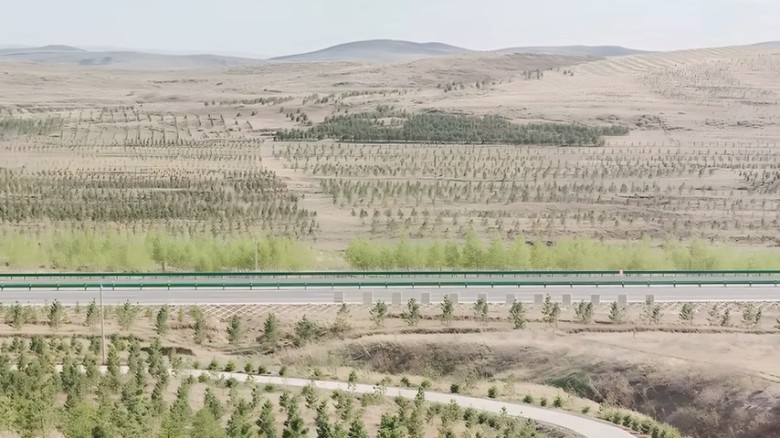
Excitement mixed with skepticism; could they achieve what seemed impossible? But the community spirit clung to optimism. Elders recounted ancient tales of abundant greenery. Schools crafted art projects depicting lush landscapes transformed from barren soil. Initiatives emerged, highlighting local legends and forgotten habitats. Defying all odds, they prepared to reclaim their environment in a challenge that bound generations together. Their endeavor would echo through history—a reclamation of heritage through unity.
The Power of Community
As word spread about the ambitious green belt initiative, local communities felt empowered to act, transforming individual hopes into collective power. Volunteers poured into the desert, planting trees that could withstand harsh climates. Families ventured out with buckets of water and saplings—each gathering becoming a celebration of life. Children giggled as they played amidst rows of newly planted trees, while elders shared stories of resilient plants that had thrived in adversity.
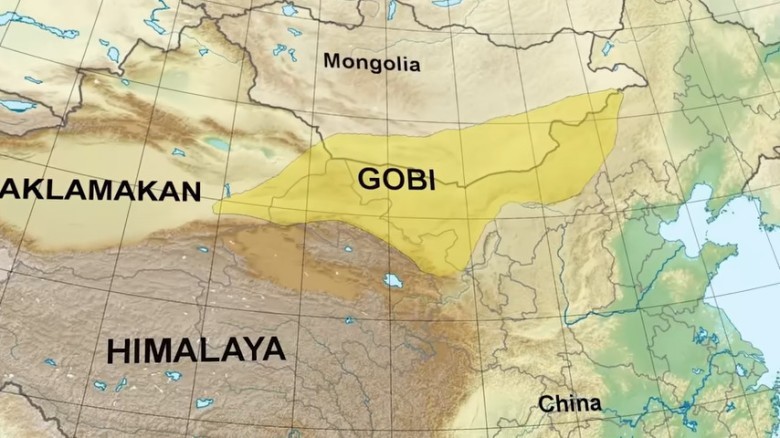
The seeds of community pride began to sprout, intertwining futures, and forging a new identity rooted in environmental stewardship. Local markets flourished, creating demand for products derived from sustainably grown trees. Excitement rippled through gatherings as people envisioned the newfound resources at their fingertips. Conversations transitioned from mere survival to economic growth—perceptions transformed. They weren’t just battling desertification; they were sowing the seeds of a name they could call their own—guardians of a revitalized landscape. In this shared journey, their lives found greater purpose.
The Other Side
However, amid the successes, concerns bloomed—critics surfaced, questioning China’s ambitious methods. Was the relentless pursuit of progress overshadowing ecological preservation? Beyond the greenery lay stark truths; the ecological cost of industrialization loomed large. The increasing demand for sand and gravel led to widespread water extraction from rivers and lakes, threatening local ecosystems. Angry fishermen watched as their waters receded, and wildlife diminished, creating tension amid the utopian dream of the green ventures.
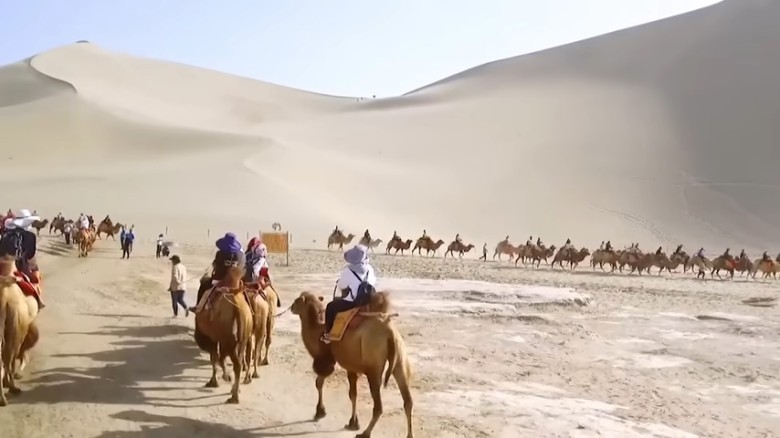
Prominent environmentalists voiced grave warnings about the unsustainable strain on vital resources. Town meetings filled with unease as debates rippled through the community. Could they sustain progress while prioritizing preservation? Conversations turned tense as advocates clashed with industry supporters. Yet, within this turmoil, seeds of awareness began to germinate. Whether they had to confront the issues head-on or risk losing the fragile balance became not only a pressing challenge but also an opportunity to redefine the narrative.
The Highways of Ambition
Amid these dilemmas, the construction of an elaborate highway system across the Taklamakan beckoned as a beacon of hope. Three highways cut through the desert, enabling faster transportation of goods and bolstering economic connections. Yet the terrain posed relentless challenges; powerful sandstorms frequently disrupted progress, burying vital routes. Communities rallied again, transforming engineers into heroes as they sought innovative solutions to combat adversity. Schools introduced engineering projects, inspiring students to think creatively in the face of environmental challenges. Innovative ideas emerged on controlling drifting sands, with green solutions flourishing.
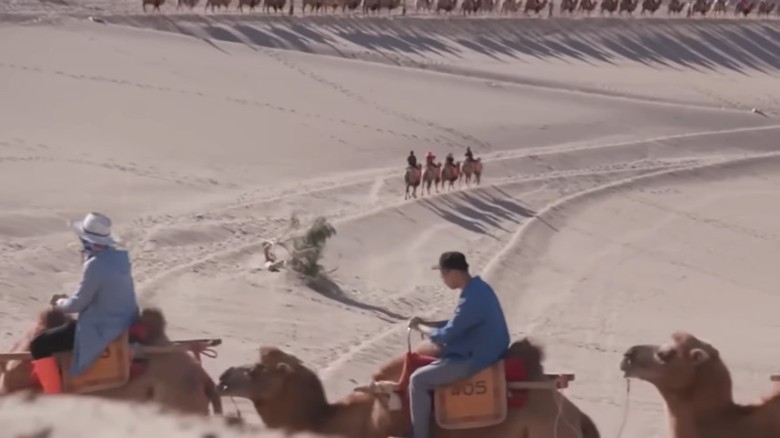
Bushes and plants were cultivated along the highways to hold the soil in place—the very landscape that they once feared became their partner in keeping the roads functional. An unbreakable bond emerged between the communities and the roads, where commerce flourished, and livelihoods thrived. Enthusiasm surged: they were not merely building infrastructure but laying down tracks for a new identity amid sand and resilience.
A Sustainable Revolution
As the highways became vital arteries for progress, a new wave of sustainability emerged. Engineers designed solar-powered irrigation systems to nurture the vegetation along these collected paths. Solar panels lined the roads, connecting communities to renewable energy. Conversations shifted toward reusing resources, and families began to see nature as a partner rather than an adversary. Multiple solar projects sprouted across the desert, illuminating homes and empowering businesses, preserving ancient practices while enabling new economic opportunities.
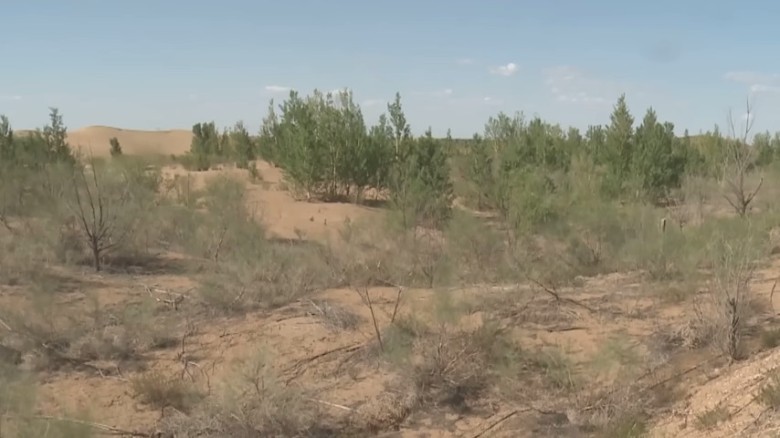
The ecological restoration expanded, influencing local attitudes from caution to confidence. Vibrant markets now boasted of sustainable products, while children learned the value of regenerative practices. Folk tales intertwined with conservation efforts as stories of the land’s beauty resonated through generations. Schools organized field trips to educate students about their evolving environment. This revolution became a testament to hope—a narrative shifting from despair to determination as communities came together on this journey towards sustainability.
Railways and Resilience
Innovation thrived, leading to the establishment of a remarkable railway system traversing the arid stretches of the Taklamakan. While the arid terrain posed daunting challenges, the railway connected remote regions, facilitating the transport of essential goods. When sandstorms threatened to engulf tracks, community-led efforts emerged to rescue transportation. Citizens mobilized, laboring tirelessly to keep the tracks clear, while inventive methods were deployed to shield the railroad from encroaching sands. Towns came alive with stories of unity, determination overcoming nature’s wrath.

Through these struggles, significant bonds formed across communities. Families brought hot meals and water to workers, turning hardship into solidarity. Enthusiasm caught fire as children marveled at the train’s journey—glimpses of thriving towns inspired dreams of future adventures. Resilience intertwined with innovation, sparking new ideas for maintaining infrastructure against nature’s pushback. The railway became a lifeline, echoing tales of hope as communities intertwined, each victory a testament to their indomitable spirit.
Unyielding Power
With energy generation at the forefront, China’s ambitious push toward sustainability reached new heights through solar thermal power stations spread across the desert. As massive structures harnessed sunlight to power homes, communities found hope in the promise of clean energy. The stations became symbols of progress, illuminating a path to independence amid arid surroundings. Families marveled at these colossal achievements, realizing their potential as agents of change. Children’s classrooms transformed into innovation hubs as students learned about renewable energy technologies.
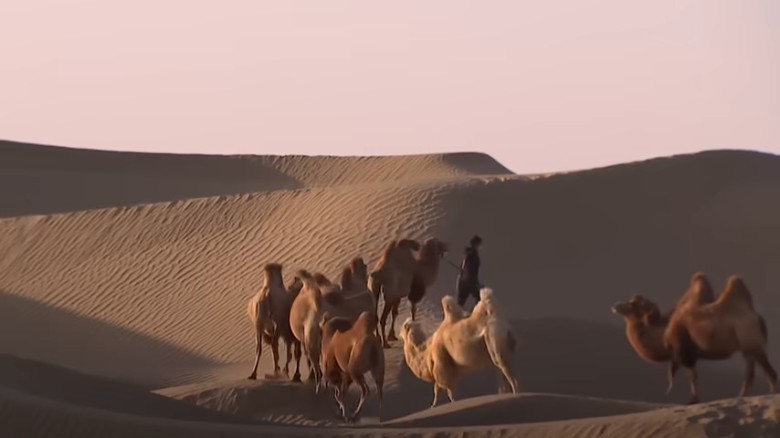
Projects engaging local communities unveiled newfound aspirations, prompting youth to explore careers in sustainability. Parents gathered proudly as they saw their children filled with inspiration. Economic opportunities arose, marking a shift from dependency on traditional energy sources. The glow of solar panels illuminated hopes alongside the rising sun. The desert, once deemed inhospitable, now echoed stories of progress, revealing bonds between innovation and environmental stewardship that turned inspiration into action.
Photovoltaics: A New Era
In a stunning depiction of ambition, China unveiled the world’s largest environmentally friendly photovoltaic power plant in the Kabuqi Desert. Featuring more than 196,000 solar panels, it formed a breathtaking image of a galloping horse—an artistry blending technology and culture. Communities flocked to witness this grand spectacle, marveling at the fusion of modernity and tradition. The plant’s generated energy equated to conserving millions of tons of coal, and families celebrated this triumph as a step toward a greener legacy.

Local artisans They began creating unique products that highlighted this project, weaving their love of the land with their promise of sustainability. Schools organized field trips to instill environmental knowledge, and forge connections between new technologies and ancient wisdom.Communities stood united, embracing this symbol as a beacon illuminating hopes for future generations. Amid the sands, the plant’s rise illuminated not just a pathway to innovation but also a journey enriching their identities and cultures.
A Double-Edged Sword
Despite the remarkable advancements, shadows loomed over China’s progress, reminding communities of the thin line between development and sustainability. A crucial question sparked debate: How far could they push natural limits before facing dire consequences? The demand for sand surged, leading to the heinous extraction of resources from rivers and lakes, draining wildlife habitats and livelihoods. Anguished cries filled the air as fishermen watched their catch dwindle, and conversations among families turned tense.
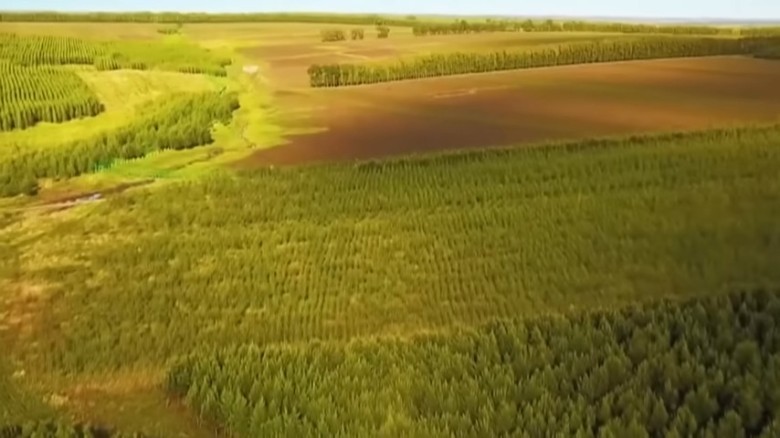
Critics voiced concerns about balancing industrial growth with environmental responsibility. Progress and degradation danced a precarious waltz, forcing citizens to confront uncomfortable truths. Town meetings became battlegrounds for ideology, echoing with clashing opinions. The collective mobilization for green projects provided a glimpse of unity but also exposed underlying conflicts. With the stakes so high, the fragile harmony of nature and progress lingered in the balance. Could they find a way to navigate this challenging landscape together?
Community Rebirth
Amid the harsh realities of ecological challenges, a new narrative began to unfold, rife with hope and renewal. As the Great Green Wall flourished, communities embraced sustainable practices, leading to a rebirth of local industries. Farmers, inspired by the greening landscape, explored regenerative agriculture and made heartfelt efforts to restore the soil. Local markets thrived, showcasing produce organically grown amidst revitalized ecosystems. Children excitedly shared stories of blooming flowers and vibrant farms, symbolizing the union of tradition and progress.
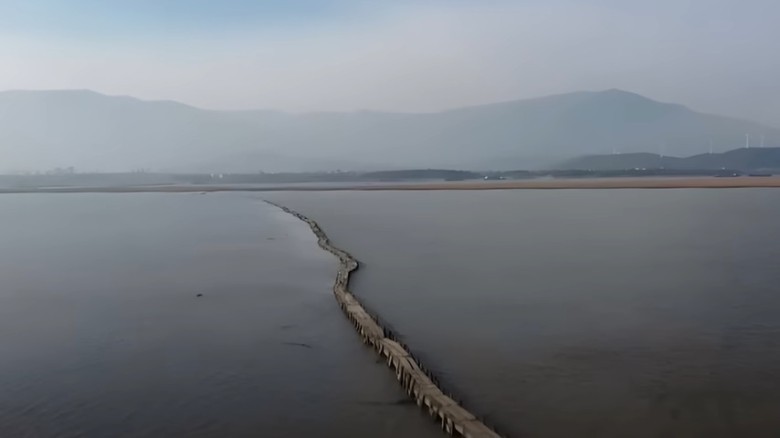
Elders gathered by the rivers to share their wisdom about generations past, igniting pride in their vast heritage. These tales interwove with the futuristic dreams coding new identities. Initiatives emerged that connected youth to nature, nurturing passions for conservation that turned into actions. As memories of dire scarcity faded, communities stood taller, their hopes tethered to beautiful landscapes. Together, they envisioned a future depicting balance—a living testament to their perseverance and resilience.
Lessons from the Past
Reflecting on the rapid transformation, a new lesson emerged: history carried invaluable wisdom, steering communities toward a sustainable future. Dealing with desertification, China had faced severe drought and environmental degradation for decades. Mistakes from the past echoed warnings—draining resources without regard for consequences had undeniable repercussions. Families engaged in storytelling sessions to share tales of periods marked by scarcity and struggle, igniting discussions about agriculture and cultivation. Young people listened intently, understanding their role as stewards of the land.
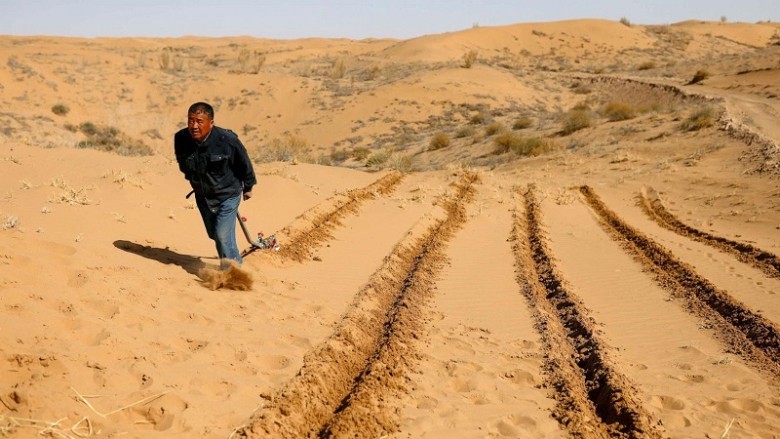
Local schools introduced curriculums centered around environmental studies, fostering respect for nature. Conversations transitioned from blame to understanding—recognizing the need for collective responsibility. Communities geared toward solutions born from history, connecting ancient knowledge with modern practices. An awareness blossomed, wrapping around generations, forming a sustainable legacy. Embracing lessons of yesterday fortified their resolve, propelling their mission into the future, knowing the harmony they sought must remain intertwined with the lessons already learned.
The Fragile Balance
As plants thrived and sand retreated, the ongoing realization of nature’s fragility heightened the urgency for preservation. Water resources, overstretched, had spiraled into crisis—dwindling groundwater reflected in parched landscapes. Families learned that while trees could yield abundance, it was essential to cultivate alliance with natural water systems. New strategies emerged for conserving moisture; each drop became precious. Towns began implementing grassroot movement initiatives—rainwater harvesting systems sprang forth in homes and schools, teaching proper resource management, and inspiring collaboration.

Elders spoke with wisdom, sharing lessons on ancient irrigation techniques, and community gardens turned into vibrant educational hubs. Children participated eagerly, playing pivotal roles in restoration projects. In this shared journey, they discovered how cooperation could bring balance to their lives. As lush trees dotted the landscape, families recognized that while their bond with the land deepened, they must remain vigilant in how they utilized available resources—preserving both heritage and future.
In Search of Solutions
With growing awareness of water scarcity, China launched extensive research initiatives to combat desertification, focusing on sustainable land-use practices. Families and communities came together with newfound purpose, eager to explore innovative agriculture and conservation strategies. Local farms embraced regenerative methods, weaving practices from ancient traditions into modern science. Busy workshops led by environmentalists sprung up in community centers, bridging knowledge gaps and producing renewed enthusiasm. Children engaged in interactive activities—translating scientific findings into fun, creative projects.

As sustainability messages echoed within homes, families turned their gardens into living ecosystems; nature sought restoration through education. The knowledge they cultivated transformed future generations, embedding the importance of care and responsibility within vibrant communities. Meanwhile, partnerships grew between neighboring towns and cities, amplifying collective impact—exchanging ideas and resources in a united battle against drought. What began as a project to combat a barren landscape transcended its original goal, evolving into a movement where everyone discovered their role in nurturing nature together.
Environmental Awakening
With each passing season, a wave of environmental consciousness swept through Chinese society. Families, schools, and communities began to advocate passionately for sustainable practices. The stories of the Great Green Wall inspired citizen activists, youth-led movements sparked, and dialogues flourished around nature conservation. Initiatives focused on systemic change intensified, with parents encouraging their children to build deeper connections with nature. Workshops in schools transformed into art sessions, where kids painted murals capturing their visions of sustainable futures. The challenge became a global one, with communities sharing knowledge on social media platforms. Environmental groups mobilized, uniting citizens earnest in understanding their responsibilities.

A sense of urgency permeated conversations; schools held outdoor classes to deepen understanding of ecology. Through events and gatherings, ordinary people became champions for environmental stewardship. As news reports highlighted local advocates transforming their neighborhoods, hope glimmered—communities were no longer passive but instead uplifted voices making change. A genuine awakening surged through society, resonating with the world.
Sustainability in Numbers
As successes mounted and aspirations flourished, numbers reflected tangible impact. Data revealed that China’s extensive greening initiatives covered over 137,000 square miles, a triumphant testament to collective effort. The once-glowering deserts now bore the fruits of resilience, illuminated by stories of families thriving along verdant pathways. Markets buzzed with renewed energy—a living ecosystem developed where communities exchanged knowledge and resources, earning financial stability through sustainable practices.
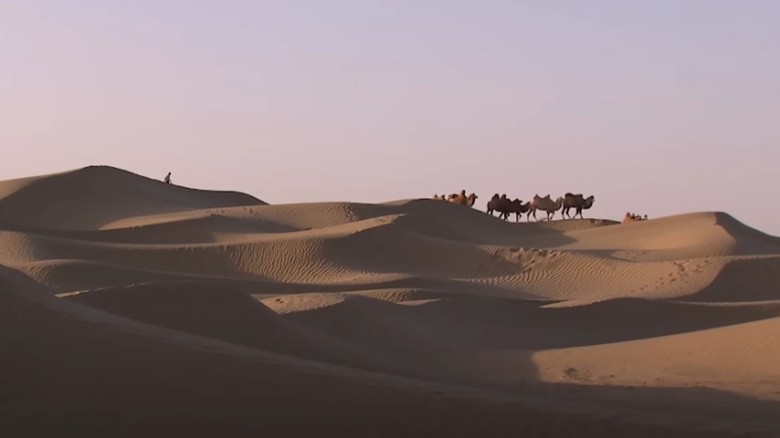
Children spoke enthusiastically about their progress, crafting plans for sustainable schools, and edgeed toward constructing efficient homes. Documentaries capturing their journey emerged, inspiring other regions facing similar challenges. Local leaders united, transforming grassroots movements into formal organizations, advocating for policies promoting environmental stewardship. Amid both praise and scrutiny, determination resonated across China—committed to nurturing a legacy of sustainability for future generations. Celebrations sprang forth, commemorating milestones achieved along the way. Amid the numbers, though, were stories of heart—complete communities intertwined in a journey of transformation and triumph.
A Shared Future
With their deserts beginning to yield bountiful harvests, an undeniable realization emerged: this was a journey shared by all. Unity woven across communities, families became intertwined in their quest for ecological balance. Collective pride paved the way for a renewed vision of prosperity—where economic growth did not threaten the environment but rather intertwined with it. An ecosystem intertwined cultures, traditions, and values as vibrant gardens flourished alongside infrastructural advancements.
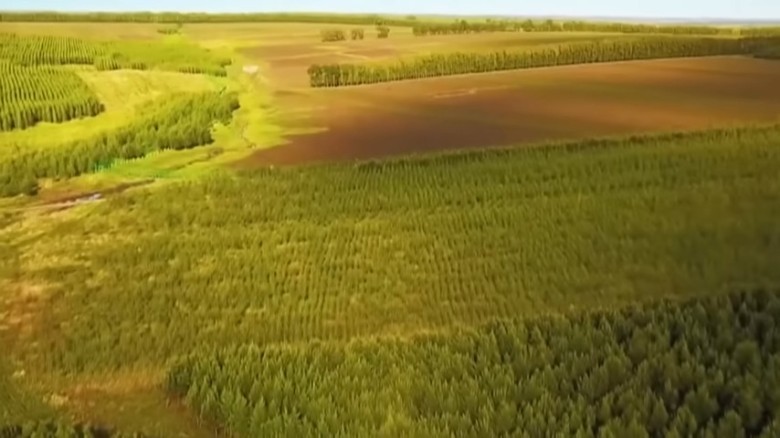
Elders became mentors amid gardens, imparting wisdom while planting seeds of hope. Schools organized outreach initiatives teaching urban families about sustainable practices, bridging gaps, and changing narratives around conservation. Families openly engaged in dialogues, striving to cultivate familiarity with nature among the younger generation. The lessons learned transformed the narrative from individual endeavors into a legacy—the culmination of collaborative spirits shaping a shared future. Nature became sacred ground, fostering interdependence and inspiring everyone to take action. In this shared commitment, hope flourished, reflecting an evolving identity interlaced with the land itself.
A Surprising Legacy
One year after the ambitious projects began transforming the landscape, the world marveled at the incredible turnaround. What began as an ambitious dream evolved into a living testament to the unyielding spirit of perseverance. The Gobi and Taklamakan Deserts, once formidable barriers, became embodiments of hope. Families who had faced despair now stood in blooming fields, living proof that change was possible. Communities, strengthened through shared experiences and stories, pursued new paths for growth and sustainability.

As successes were celebrated, lessons echoed in speeches and gatherings with children at the forefront, passionately advocating for further sustainable practices. The deserts once labeled desolate now thrummed with life vibrant with memories of struggle and triumph—the stories etched in the hearts of all. This transformation extended beyond mere reforestation; it was the realization of a dream, illuminating a path toward greater alliances with nature. Together, they crafted a legacy underscored by resilience, that would inspire generations to come.











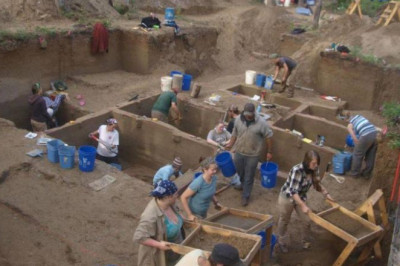


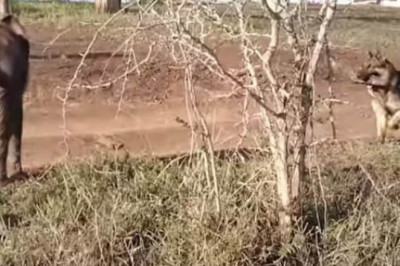
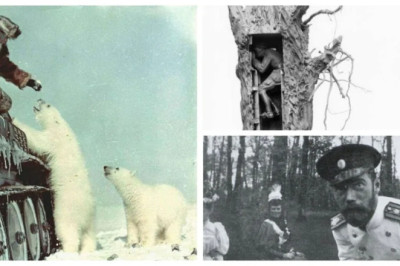




Comments
0 comment